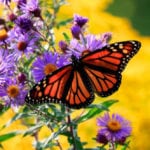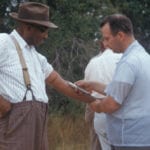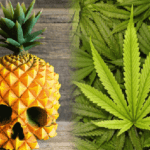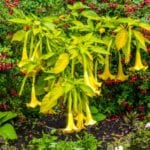 History
History  History
History  Technology
Technology Top 10 Everyday Tech Buzzwords That Hide a Darker Past
 Humans
Humans 10 Everyday Human Behaviors That Are Actually Survival Instincts
 Animals
Animals 10 Animals That Humiliated and Harmed Historical Leaders
 History
History 10 Most Influential Protests in Modern History
 Creepy
Creepy 10 More Representations of Death from Myth, Legend, and Folktale
 Technology
Technology 10 Scientific Breakthroughs of 2025 That’ll Change Everything
 Our World
Our World 10 Ways Icelandic Culture Makes Other Countries Look Boring
 Misconceptions
Misconceptions 10 Common Misconceptions About the Victorian Era
 Mysteries
Mysteries 10 Strange Unexplained Mysteries of 2025
 History
History 10 Things You Didn’t Know About the American National Anthem
 Technology
Technology Top 10 Everyday Tech Buzzwords That Hide a Darker Past
 Humans
Humans 10 Everyday Human Behaviors That Are Actually Survival Instincts
Who's Behind Listverse?

Jamie Frater
Head Editor
Jamie founded Listverse due to an insatiable desire to share fascinating, obscure, and bizarre facts. He has been a guest speaker on numerous national radio and television stations and is a five time published author.
More About Us Animals
Animals 10 Animals That Humiliated and Harmed Historical Leaders
 History
History 10 Most Influential Protests in Modern History
 Creepy
Creepy 10 More Representations of Death from Myth, Legend, and Folktale
 Technology
Technology 10 Scientific Breakthroughs of 2025 That’ll Change Everything
 Our World
Our World 10 Ways Icelandic Culture Makes Other Countries Look Boring
 Misconceptions
Misconceptions 10 Common Misconceptions About the Victorian Era
 Mysteries
Mysteries 10 Strange Unexplained Mysteries of 2025
Top 10 Plants That Led To Useful And Lifesaving Drugs
Med students have to learn about a vast amount of drugs in medical school and are expected to know about them. You might be surprised how many medicines were actually derived from nature. Many know that aspirin is derived from willow bark, but few realize just how many other medications are derived from plants.
A number of very common and useful medications employed today have extremely interesting histories and were taken from nature. I am a medical student myself, and I hope you find the origins of these medications to be as fascinating as I do.
10 Cannabis Sativa And Dronabinol

The Cannabis sativa plant has been part of the recent controversy regarding the legality of marijuana. While marijuana is most commonly associated with the cannabis plant, there is another extremely useful pharmaceutical that has come from it.
Many know the symptoms of marijuana intoxication, including red eyes, dilated pupils, dry mouth, increased appetite, slowed reaction time, euphoria, dizziness, shallow breathing, and increased heart rate. While some of these symptoms seem unappealing, the medical community has found others to be useful in treating certain populations of patients.
The drug dronabinol has been created as a synthetic form of THC to utilize some of marijuana’s side effects. There are various uses for the drug, but most commonly, it is used as an appetite stimulant for patients with AIDS and as an antiemetic in patients receiving chemotherapy.[1]
While there has been some controversy regarding the use of dronabinol, it has been shown to be minimally harmful with a low potential for abuse. Who knew that giving someone the munchies could be so beneficial?
9 Podophyllum Peltatum And Etoposide

The Native Americans have recorded using the plant Podophyllum peltatum as a purgative, antiparasitic, and cathartic hundreds of years before its usefulness was officially recognized. Interestingly, the Penobscot people of Maine even appeared to be using it to treat “cancer.” The Iroquois additionally used it to treat snakebites and as a suicide agent. Despite this, the medical use for P. peltatum was not official in the United States until 1820 and not until 1861 in Europe.
Hartmann Stahelin was a Swiss pharmacologist who had made large contributions to the cancer therapy field. He had a particular proclivity for biomedical sciences and was recruited to lead the pharmacology department in Basel in hopes of researching cancer and immunology in 1955.[2]
Once in Basel, he lead the discovery of various antitumor agents from P. peltatum, also known as mayapple. Initially considered by chemists to be “dirt,” Stahelin noticed that a particular extract from the Podophyllum plant had interesting properties. After purifying this compound, it was found to be a new class of antitumor medication.
Named etoposide, the medication works by stopping the tumor cells’ ability to divide. It blocks a specific enzyme that cells need in order to replicate. Therefore, rapidly dividing cells such as cancer cells are heavily affected. Currently, etoposide is used to treat various cancers, especially that of the lung, and can be thanked for saving many lives.
8 The Calabar Bean And Physostigmine

The Efik people from the Akwa Iborn State, or modern-day Southeast Nigeria, were the first to be in contact with physostigmine from the calabar bean (Physostigma venenosum). Use of the calabar bean was very common in Efik culture as an ordeal poison for those accused of witchcraft. The milky extract of the bean was given to the accused, and if they died, the accusation of witchcraft was confirmed. If they lived, usually due to vomiting the poison out, they were declared innocent and set free.
Missionaries wrote about the Efik’s use of the calabar bean, and some of the beans found their way back to Scotland.[3] In 1855, a toxicologist named Robert Christison decided to test the poison’s toxicity by consuming a bean and surviving to document what he experienced.
It was studied throughout the 1860s, most notably by Douglas Argyll Robertson, who was the first to use the calabar bean extracts medically and recorded its effects on the pupil. The most potent component from the calabar bean was finally isolated and named physostigmine by Thomas Fraser. In 1867, Ludwig Laqueur tested the extract on himself and used it to successfully treat his glaucoma. By the 1920s, Otto Loewi discovered the neurotransmitter acetylcholine and found that the calabar bean extract worked by increasing that neurotransmitter, having profound effects on the parasympathetic nervous system.
Medically, physostigmine does increase the amount of the neurotransmitter acetylcholine by blocking the enzyme acetylcholinesterase, which breaks it down. It is especially useful in treating the disease myasthenia gravis and has been more recently used to treat Alzheimer’s, as it has the ability to cross the blood-brain barrier.
7 Meadow Saffron And Colchicine
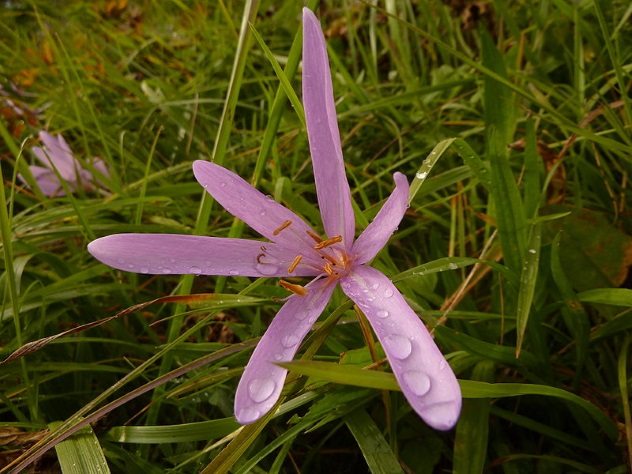
The use of the plant Colchicum autumnale, or meadow saffron, for medical problems has been recorded as far back as 1500 BC on the ancient Egyptian Ebers Papyrus for rheumatism and swelling. Since then, C. autumnale has been a treatment for other maladies such as gout, familial Mediterranean fever, Behcet’s disease, and pericarditis. It works in a similar way to Taxol, as it blocks microtubules.
As early as the first century AD, C. autumnale was being described as a treatment for gout by Pedanius Dioscorides. Gout is a type of arthritis characterized by needle-shaped crystals building up in the joints, causing sudden pain attacks, swelling, and redness. Others, such as Alexander of Tralles, Persian physician Avicenna, and Ambroise Pare have also recommended C. autumnale as a treatment for gout. Colchicine itself was isolated from C. autumnale in 1820 by French chemists P.S. Pelletier and J.B. Caventou. It was later purified by P.L. Geiger in 1833.[4]
Despite its long history of being effective, colchicine actually had no FDA-approved prescribing information, dosage, recommendation, or drug interaction warnings until as recently as 2009.
6 Indian Snakeroot And Reserpine
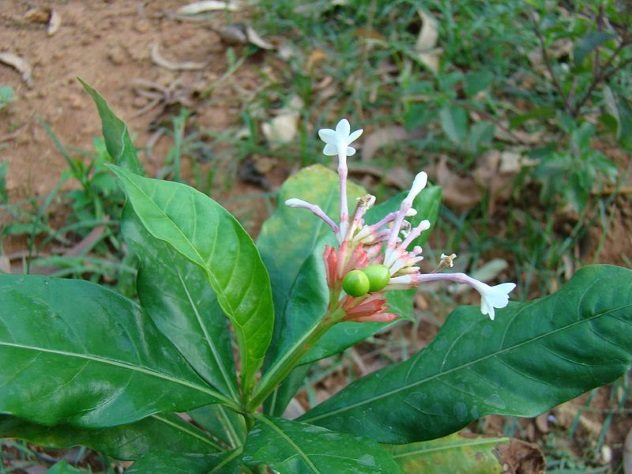
Rauwolfia serpentina (Indian snakeroot or sarpagandha) is a plant that was known in India for its medicinal purposes long before its discovery by the Western world. Georg Rumpf, a botanist with the Dutch East India Trading Company, first noticed the plant in 1755 during his travels. He recorded it as being used as a treatment for insanity in South Asia. Extracts from the roots of the Indian snakeroot were sold cheaply in markets all over India as pagalon ki dawa, or “drugs for the mad.” In addition, it was also used by mothers in Eastern India to put their crying babies to sleep as well as a treatment for labor, snakebites, fever, and intestinal problems. Mahatma Gandhi reportedly used extracts from the roots as a tranquilizer as well.
By the early 20th century, India undertook efforts to standardize and research the pharmacologic properties of sarpagandha. Professor Salimuzzaman Siddiqu began systematic research on the active constituents of the roots and root bark in 1927. Dr. Kartick Chandra Bose and Gananath Sen, two leading physicians from Calcutta (now called Kolkata), also independently noted the use of the extract to treat high blood pressure and insanity. Dr. Rustom Vakil, known as the father of modern cardiology in India, popularized the use of the plant to treat high blood pressure.
Isolated in 1952 from the dried root of R. serpentina, reserpine quickly became popular in Western medicine. It became the first drug ever to successfully show antidepressant properties in a randomized placebo-controlled trial.[5] Though it is rarely used today due to its immense side effect profile, it was critical in furthering our understanding of the role of neurotransmitters in depression and blood pressure.
5 Indian Hemp And Pilocarpine
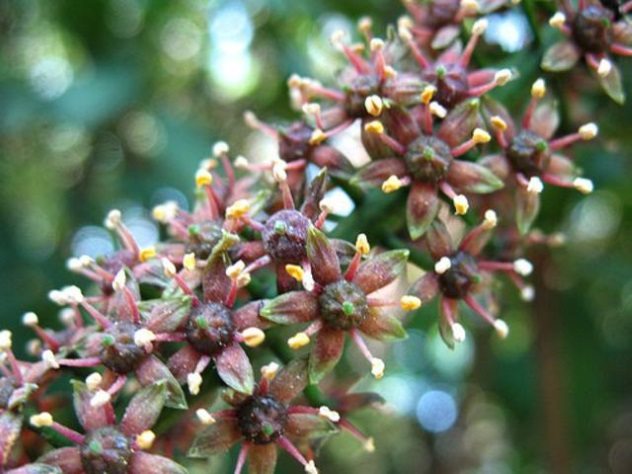
As settlers began coming to the New World in the early 1600s, they noticed that the indigenous tribes of Brazil had a vast knowledge of the medicinal uses of local plants. One plant in particular, Pilocarpus jaborandi (Indian hemp), was used to treat a variety of maladies but most commonly for fever. It was found that the leaves could trigger profuse sweating, salivation, and urination as a way to rid the body of toxins. The name jaborandi even comes from the Tupi translation for “what causes slobbering.”[6]
In the 1870s, P. jaborandi was incorporated into Western medicine and became a popular treatment for intestinal problems, lung problems, fever, skin issues, kidney disease, and edema in Europe. Surprisingly, the plant was also found to be an effective antidote to deadly nightshade poisoning. By 1875, pilocarpine was isolated from the plant and found to be the main culprit behind its effects. This was discovered almost simultaneously by two different researchers, one in France and one in England.
Pilocarpine was soon found to be an extremely effective treatment for glaucoma by decreasing the pressure in the eye. Even today, it remains a very popular and widely used treatment for glaucoma as well as a means to induce perspiration when trying to diagnose cystic fibrosis. Laboratories still haven’t been able to fully replicate and synthesize the pilocarpine found in P. jaborandi. This plant remains one of Brazil’s largest and most important exports.
4 The Pacific Yew Tree And Paclitaxel

Researchers are continuously searching for new and innovative ways to fight cancer. Sometimes, the treatments that they are searching for may be much closer to home than they realize. In 1955, the National Cancer Institute created the Cancer Chemotherapy National Service Center (CCNSC) in hopes of finding new cancer treatments. In the 1960s, the CCNSC looked to partner with the US Department of Agriculture to search for these cures within nature. Over the course of about 20 years, 30,000 natural plant and animal products were tested.
Out of the 30,000 samples, one was found to be pivotal in the treatment of cancer. Two researchers, Dr. Monroe Wall and Mansukh Wani, discovered that the extracts from the bark of the Pacific yew tree (Taxus brevifolia), indigenous to the Pacific Northwest, were toxic to tumor cells.[7] Later, it was found that the toxic compound is actually synthesized by a fungus within the bark. Thus, the new chemotherapy drug known as paclitaxel was born.
Paclitaxel (brand name Taxol) is commonly to treat breast and ovarian cancer. Medically, it works by blocking microtubules, which basically stops the cancer cells from being able to divide and grow. Since its discovery, paclitaxel has become a big part of cancer treatment and saved millions of lives.
3 Deadly Nightshade And Atropine
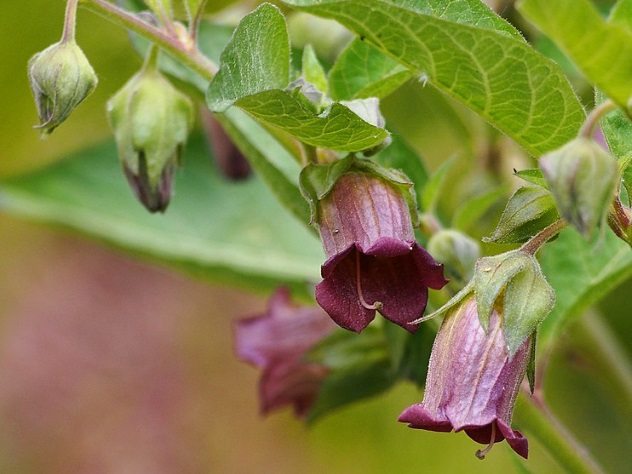
Atropa belladonna, commonly known as belladonna or deadly nightshade, is an herb that has been used for many centuries by many people to treat a wide variety of maladies. The plant is native to Europe, North Africa, and West Asia but has been more recently introduced to Canada and the United States. Prior to the Middle Ages, the herb was used as an anesthetic for surgery. Its deadly toxicity enabled its use as a poison for political enemies or on the tip of an arrow by the military in ancient Rome.
During the Middle Ages, the deadly nightshade plant became very popular for cosmetic purposes. Venetian women would use it to redden the pigment of their skin as a type of blush. Another common use for the herb was for dilating the pupils of women in order to make them more seductive and attractive. The herb obtained the name belladonna, meaning “beautiful lady,” exactly because of this use. Despite these more benign functions, many quickly became aware of the herb’s more deadly abilities. It was later utilized by assassins and criminals as well as witches to make poison.
Despite years of its use as a poison and cosmetic, it was soon realized that A. belladonna had more of an ability to help than previously realized. It could be used as a pain reliever, muscle relaxant, anti-inflammatory, whooping cough treatment, and hay fever treatment. In the 1930s, the therapeutic component of belladonna, known as atropine, was isolated.[8] Belladonna, by itself, does not have approved medical uses, but atropine has since become an extremely useful medication in the medical community.
Atropine is known as an anticholinergic, meaning it blocks the effects of the neurotransmitter acetylcholine. Its mechanism of action is basically opposite to that of physostigmine. Because of this, atropine can cause pupil dilation, increased heart rate, and decreased secretions. In addition to its uses of raising heart rate and decreasing saliva prior to surgery, it can also be used to reverse certain overdoses. Various derivatives of atropine have also been developed for other medical uses. For example, tiotropium and ipratropium bromide are used in various lung disorders.
2 The Cinchona Tree And Quinine

Found in the bark of the cinchona tree in South America, quinine was initially used by the Quechua as a muscle relaxant.[9] It was then brought to Europe by the Jesuits, and by 1570, the Spanish had become aware of the cinchona bark’s medicinal properties. Nicolas Monardes and Juan Fragoso recorded that it could be used as a treatment for diarrhea. Despite the varied ancient uses for quinine, the big discovery for its use came in the early 17th century.
The marshes and swamps surrounding Rome in the early 17th century were teeming with malaria-ridden mosquitoes. Malaria is a mosquito-borne infection caused by parasitic protozoans. Symptoms include fever, fatigue, vomiting, headache, jaundice, seizures, and eventually death. Malaria lead to the deaths of many popes, cardinals, and citizens at the time. Agostino Salumbrino, a Jesuit apothecary, had seen the cinchona bark being used for the shivering phase of malaria. At the time, Salumbrino did not know that the bark’s effect on malaria was unrelated to its effect on rigors, but regardless, he brought it to Rome.
Over the years, cinchona bark became one of the most valuable exports from Peru, even curing King Charles II. In 1737, Charles Marie de La Condamine discovered the most potent component of cinchona bark, and it was later isolated by Pierre Joseph Pelletier and Joseph Caventou in 1820. The extract was was named quinine, based on the Incan word quina, meaning “bark” or “holy bark.”
Large-scale malaria prophylaxis with quinine began around 1850. The drug actually played a very significant role in African colonization by Europeans. In the early 19th century, Peru tried to outlaw the export of cinchona bark, seeds, and saplings to maintain their monopoly. Fortunately for the world, the Dutch were successful at growing the tree in their Indonesian plantations and soon became the main supplier.
During World War II, the Allies were cut off from quinine when Germany conquered the Netherlands and Japan controlled Indonesia and the Philippines. The United States was eventually able to obtain four million seeds from the Philippines, but not before thousands of Allied troops died from malaria in Africa and the South Pacific. Thousands of Japanese troops also died despite their control, due to ineffective manufacturing of quinine.
Since its discovery, quinine has played a role in saving millions of lives as well as having major effects on wars, colonization, and history in general. It has since been replaced as the first-line treatment for malaria by newer drugs in 2006 by the World Health Organization. Quinine can also be used for other diseases, such as babesiosis, restless leg syndrome, lupus, and arthritis.
1 Foxglove And Digoxin

Digoxin was once a mainstay treatment for heart failure and arrhythmia. It works by slowing the patient’s heart rate but increasing the heart’s contraction intensity. Unfortunately, the drug has a very narrow therapeutic index, meaning that it can be extremely easy to overdose, with disastrous effects.
Digoxin’s discovery by Scottish doctor William Withering occurred in 1775 . He was working as a physician when a patient came to him suffering from a bad heart condition. Withering had nothing to offer the man, as there was no acceptable treatment for heart failure at the time. Thinking he was going to die, the patient went to a town gypsy and miraculously improved after being given an herbal remedy.
After seeing this, Dr. Withering searched for the gypsy, eventually finding her and demanding to know what was in her remedy. After Dr. Withering bargained with the gypsy, she finally revealed many things within the remedy, but Digitalis purpurea, or foxglove, was the main ingredient. The potency of foxglove was already well-known, as it had been used as a poison in medieval trials by ordeal as well as externally applied to heal wounds.
Withering immediately went to work testing variations of the foxglove extract on 163 patients. He eventually found that dried, powdered leaves gave him the most successful results, and it was first officially used in 1785.[10] Even though it is not as commonly used now, digoxin was revolutionary in its ability to help those with heart failure.
+ Chondrodendron Tomentosum Vine And Tubocurarine
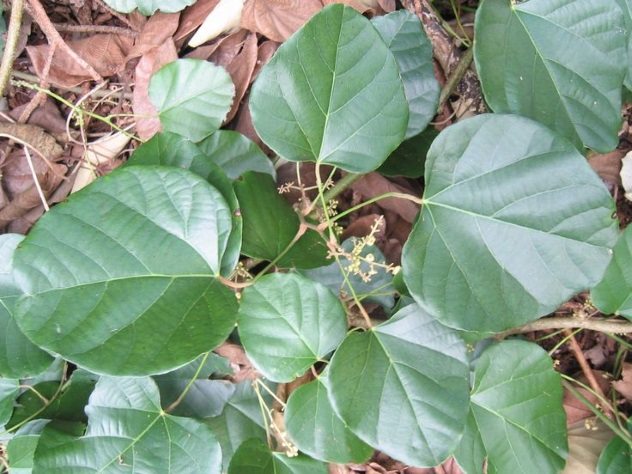
For centuries, South American natives used poison from the Chondrodendron tomentosum vine to hunt animals. When Spanish conquistadors returned from the New World, they spoke of a mysterious “flying death.” In 1516, Peter Martyr d’Anghera, a chronicler, wrote of these tales in his book De Orbe Novo for King Ferdinand and Queen Isabella. Sir Walter Raleigh visited Venezuela in 1594 and also recorded the use of the poisoned arrows in his book Discovery of the Large, Rich and Beautiful Empire of Guiana. One of Sir Raleigh’s lieutenants referred to the poison as ourari, which later became various European renderings, one of which was “curare.”
Further exploration of South America was put on hold until the 18th century due to wars. A physician named Edward Bancroft traveled to South America for five years and was able to bring back some samples of curare. Sir Benjamin Brodie then used his samples on small animals. He was able to keep them alive after inflating their lungs with bellows. Charles Waterton moved to South America in 1804 and obtained some ourari from a local tribe. In 1814, he demonstrated its effects on three donkeys to an audience that included Sir Benjamin Brodie. The first donkey had its shoulder injected with the extract and died immediately. The second had it injected under a tourniquet on its leg and lived until the tourniquet was removed. The third died after its injection but was revived with bellows and went on to survive.
Curare was found to work at the nerve-muscle junction after Claude Bernard’s experiments on frogs. Further research on curare discovered that it had potential as a muscle relaxant for patients under anesthesia. Curare-like compounds were created, mirroring the original isolated curare. Today, these compounds are vital to almost all procedures involving anesthesia. The drugs work by causing complete skeletal muscle relaxation during surgery or mechanical ventilation as a part of the general anesthesia protocol.[11]
Shelby is currently a third-year medical student. While she doesn’t have much free time anymore, she still loves writing top 10 lists when inspiration strikes.
Read about more interesting and unique plants on 10 Plants That Want To Kill You and 10 Weird And Truly Terrifying Plants.
